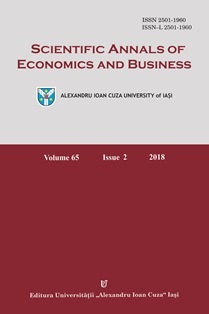Comparing Simple Forecasting Methods and Complex Methods:
A Frame of Forecasting Competition
Comparing Simple Forecasting Methods and Complex Methods:
A Frame of Forecasting Competition
Author(s): Emrah GulaySubject(s): Economy, Micro-Economics, Accounting - Business Administration, Business Ethics
Published by: Editura Universităţii »Alexandru Ioan Cuza« din Iaşi
Keywords: dynamic relation model; ANFIS; ARIMA-ANFIS; gross capital formation; domestic savings;
Summary/Abstract: The gross capital formation (GCF), which helps to gradually increase GDP itself, is financed by domestic savings (DS) in both developed and developing countries. Therefore, forecasting GCF is the key subject to the economists’ decisions making. In this study, I use simple forecasting methods, namely dynamic relation model called “Autoregressive Distributed Lag Model (ARDL)”, and complex methods such as Adaptive Neuro Fuzzy Inference System (ANFIS) method and ARIMA-ANFIS method to determine which method provides better out-of-sample forecasting performance. In addition, the contribution of this study is to show how important to use domestic savings in forecasting GCF. On the other hand, ANFIS and hybrid ARIMA-ANFIS methods are comparatively new, and no GCF modeling using ANFIS and ARIMA-ANFIS was attempted until recently to the best of my knowledge. In addition, Autoregressive Integrated Moving Average (ARIMA) method and Vector Autoregressive (VAR) model serve as benchmarks, allowing for fair competing for the study.
Journal: Scientific Annals of Economics and Business
- Issue Year: 65/2018
- Issue No: 2
- Page Range: 159-169
- Page Count: 11
- Language: English

